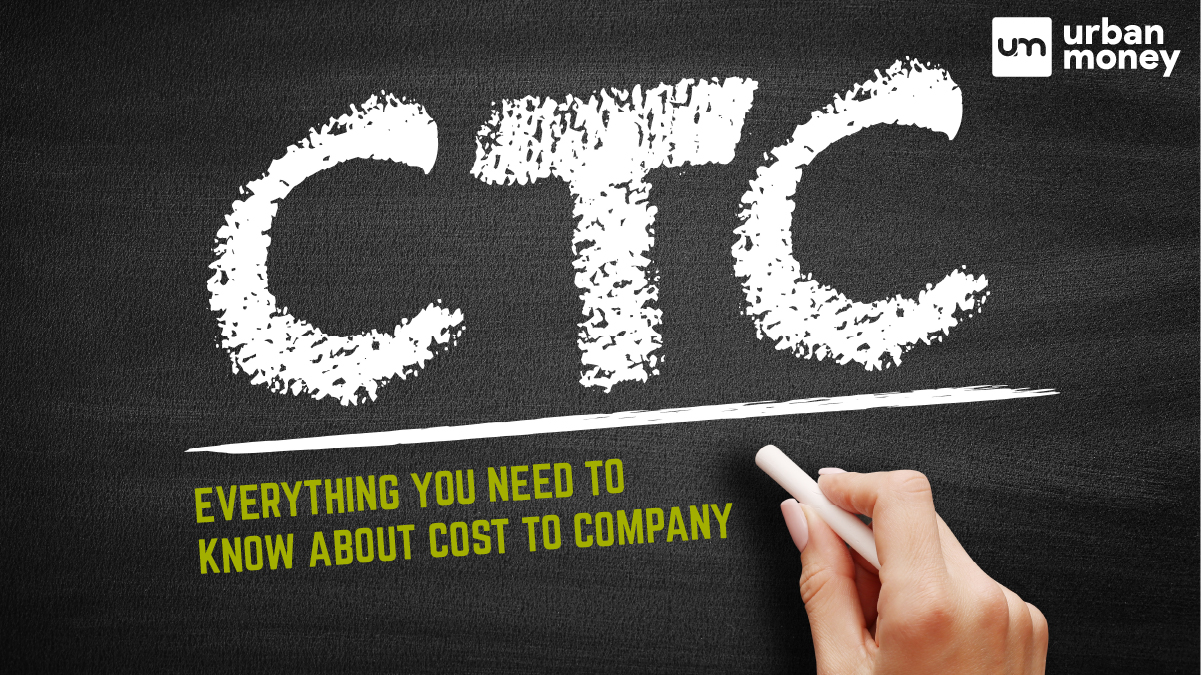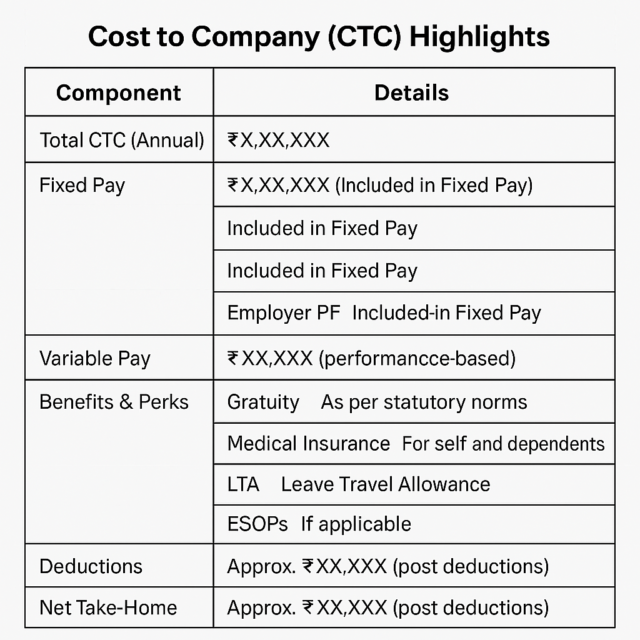Top 10 Best Private Banks in India List 2025
January 09, 2025
Personal Loan Archive | Cost to Company (CTC)

April 08, 2025


When considering a job offer, it’s easy to become fixated on the attractive “CTC” figure. But there’s more to this figure than strikes the eye. Realising the value of CTC requires going beyond its initial cost to determine its ultimate worth—or lack thereof. By breaking down the components of CTC and allowing you to see beneath its surface, this blog helps you make well-informed judgements regarding your compensation plan. If you are wondering what CTC is and how it works, this is the perfect place for you.

Table of Contents
ToggleCTC is a common term in India that refers to an employee’s total salary package. In simple language, CTC means the total salary that a company offers to its employees for a year. This salary includes a Provident Fund, Medical Insurance, take-home salary, and more. It also consists of the employee’s expenses from the organisation as wages.
The CTC’s full form is Cost to Company.
The CTC contains some elements the company offers its employees for their benefits and expenses. Every organisation’s CTC includes certain elements, while others vary from company to company. Here are the aspects of CTC:
Here are some key features and CTC’s benefits:
Calculating CTC is a very simple process. You can also use an online CTC calculator to know your correct salary. To calculate CTC, you need to add direct benefits and indirect benefits. Indirect benefits are the benefits you enjoy without receiving them directly as cash. It includes Health insurance, company car, meal coupons, mobile phone allowance, etc. On the other hand, direct benefits include Basic pay, house rent allowance (HRA), medical allowance, conveyance allowance, bonuses, incentives, etc.
Let’s understand the calculation process easily with an example:
1) Monthly Direct Benefits:
Annual Bonuses: ₹50,000
2) Annual Indirect Benefits:
Total Annual Indirect Benefits = ₹17,000
3) Annual Savings Contributions:
Total Annual Savings Contributions = ₹72,000
4) Annual Direct Benefits:
5) Total CTC:
So, your CTC per annum is ₹7,63,000. This calculation includes your yearly salary, benefits, and savings contributions.
When evaluating or offering CTC (Cost to Company), both employers and employees should consider several key factors:
You may need clarification about CTC and Gross Salary being the same. However, some aspects make both different. Here is the CTC and Gross Salary comparison:
| CTC (Cost to Company) | Gross Salary |
| The total cost incurred by the employer on an employee. | Total salary earned by an employee before deductions. |
| CTC includes basic salary, fixed and variable allowances, and benefits. | Gross wage includes basic salary and fixed allowances. |
| CTC includes deductions for taxes, PF, and other deductions. | Gross income does not include any deductions. |
| Used for employer’s cost calculation and budgeting. | Used for calculating the employee’s income tax liability. |
| Can vary based on performance (includes incentives/bonuses). | This aspect does not change based on performance. |
| Not the actual amount received by the employee. | The amount received before deductions. |
| The total package offered by the employer. | Part of CTC before any deductions. |
| This package provides a clear view of total compensation. | GS focuses only on the fixed salary component. |
| Commonly used in job offers and compensation discussions. | Widely seen on pay slips and for tax purposes. |
Here is an example of the calculation of gross and net salary from CTC:
Let’s assume the CTC is ₹12,00,000 per annum.
Net Salary = Gross Salary – Total Deductions
Net Salary = ₹8,16,000 – ₹1,32,500
Net Salary = ₹6,83,500 per annum
CTC (Cost to Company) varies across sectors and organisations due to factors like industry norms and company size. CTC is often high in the IT and Technology sector, with bonuses, stock options, and performance-based incentives. Banking and Finance offer similar high CTCs with added insurance and retirement benefits. Manufacturing tends to have lower CTCs but includes allowances for shifts and transport, while Healthcare might offer special allowances like hazard pay and health insurance. Retail and FMCG sectors include sales incentives and travel allowances, often with employee discounts and stock options, whereas Education offers a basic salary with housing allowances and professional development funds. Large corporations typically provide higher CTCs with comprehensive benefits, including health insurance and wellness programs, while SMEs offer lower CTCs focused on basic salary and limited perks. Startups may offer lower fixed salaries but compensate with higher equity or stock options and flexible working conditions.
Here are some of the best lesser-known facts about CTC:
Understanding the difference between CTC and take-home salary is essential for financial planning. The CTC components, such as allowances and bonuses, significantly define an employee’s overall package. A CTC calculator can help you break down these elements and get a clearer picture of your earnings. You can make more informed decisions during salary negotiations and better manage your income by being informed about CTC.
FAQs
CTC includes all benefits and deductions, while Take-home pays is what you receive after deductions.
CTC structures vary by company, depending on their policies and the benefits offered.
CTC includes the total value of all benefits provided by the employer.
Yes, CTC can be negotiated based on the role, experience, and company policy.
CTC represents the total cost to the employer, while total remuneration includes all earnings and benefits received by the employee.
Comparing CTC across industries can be misleading due to varying benefit structures.
Certain components of CTC are taxable, affecting your net take-home salary.










© 2025 www.urbanmoney.com. All rights reserved.

Need Loan Assistance?

Thank you for showing your interest. Our agent will get in touch with you soon.

















